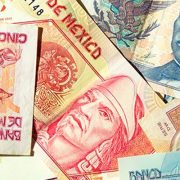Mexico has long been one of the strongest trading partners with the U.S. and a preferred “nearshore” location for U.S. manufacturing operations. Manufacturing is at the core of the Mexican economy and represents a wide range of industries. Manufacturing investments are stimulating the economy, creating jobs, and making Mexico a top FDI location in Latin America.
“Mexico has significant momentum right now in the area of manufacturing,” says Larry Gigerich, managing director for Ginovus, a site location firm in Indianapolis, Indiana. “Many global companies view Mexico as a favorable manufacturing and distribution location due to its lower costs, good incentive programs, and proximity to one of the largest economies in the world — the United States.”
According to many experts, Mexico’s economic growth for 2015 is expected to be in the 2.5–2.9 percent range — very strong compared to the rest of Latin America, which is averaging about 0.5 percent. In June 2015, year-over-year business investment had increased by 8.6 percent. Mexico is expected to do even better in 2016 — a growth rate of about 3.2 to 3.5 percent.
Growth Across Industrial Sectors
“Mexico is the seventh-largest vehicle manufacturer in the world and the sixth-biggest manufacturer of auto parts, with an estimated $81.5 billion in sales in 2014,” according to Doug Donahue, vice president of Business Development with Entrada Group, which helps manufacturers set up operations in Mexico. “Manufacturing also received the most FDI in 2014 — about $13 billion,” Donahue says.
Foreign investment in factories in Mexico is on the rise, even for industries that have been China-bound in the past. At the top of that list are global automakers that are investing heavily in new assembly plants. Companies that have made recent announcements include Nissan, General Motors, Ford, and Fiat Chrysler.
“In March VW indicated it would spend $1 billion expanding a Mexican plant to build a small SUV for the U.S. and some foreign markets,” says John Boyd, principal with The Boyd Company, a location consulting firm based in Princeton, New Jersey. “In Hermosillo, Ford Motor Corp. is doubling production and hiring 1,000 workers to build its new Fusion model. Combined, automakers and parts suppliers have earmarked more than $20 billion of new investments,” Boyd says.
Rising labor cost in China and overly extended and risky supply chains to Asia are helping make Mexico the preferred nearshore location for many Boyd clients in other manufacturing sectors, such as medical devices, plastics, and food processing. Donahue agrees: “Even though automotive and aerospace are among the high-profile manufacturing industries of Mexico, we are seeing growth among our entire customer base, including electronics, consumer goods, and heavy transport, along with automotive and aerospace OEMs and Tier 1s,” he adds. “This growth is not only driven by the attractive Mexican manufacturing market as compared to the rest of the world, but also Mexico’s internal market growth.”
Mexico’s many free trade agreements are also factors helping it to attract new industrial investment.
A Productive Workforce
Mexico’s unemployment rate is about 4.3 percent — a reflection of reforms that were implemented by President Enrique Peña Nieto in 2012, including an improved minimum wage, women’s worker rights, and better labor union accountability. Some of his business-related reforms — for example, allowing foreign development of energy reserves and breaking up corporate monopolies — have also encouraged business investment.
“Regarding job performance, once Mexican employees have been brought on and trained, we have seen them to be highly dedicated and productive employees and, in many cases, more productive than their U.S. or Canadian counterparts,” says Donohue.
In the past, he notes, the major reason manufacturers set up operations in Mexico was to take advantage of lower labor costs. “Now, however, more training is required as suppliers are requiring higher competencies and skill sets. This is causing wage pressures and retention concerns, as more and more suppliers are coming into Mexico, and they all are competing for the same labor.”
Investing in the Future
To maintain its economic momentum, Mexico plans to invest more than $100 billion through 2018 to improve its transportation infrastructure. “Mexico realizes that, in order to attract international OEMs, Tier 1s, and their suppliers, it must establish a solid transportation infrastructure throughout the country,” Donohue says.
To keep up with the hiring needs of its manufacturers, the Mexican government is also investing heavily in further education and training of its workforce, creating more specialized programs with input from the commercial sector. Increasing funding, however, for such government education programs remains a challenge and may have to be gained through tax increases.
A bright spot is the emergence of Mexico City as a global financial center. Mexico City currently houses the headquarters of the country’s largest banks, insurers, and many international financial service companies for Latin America.
“Citigroup in Mexico City reportedly produces almost three times as much revenue than all 16 Citigroup branches in the rest of Latin America,” says Boyd. “Banco Santander Mexico’s $4.13 billion public stock offering in 2012 was Mexico’s largest ever in the financial sector, a strong sign of the revival of the nation’s financial services sector. After many years of economic missteps, these and other successes show Mexico is emerging as Latin America’s most promising relocation and investment market,” Boyd concludes.
Source: http://www.areadevelopment.com/InternationalLocationReports/December-2015/Mexico-Economy-Setting-Production-Records-452233.shtml





